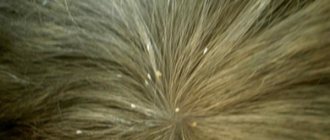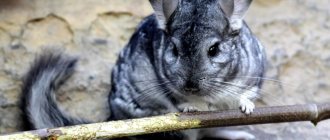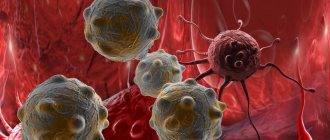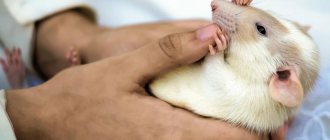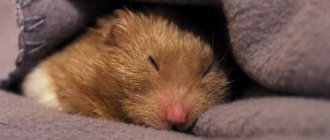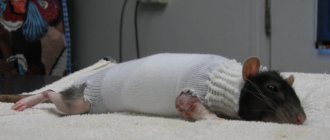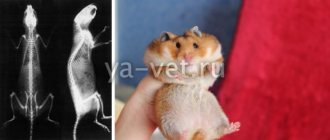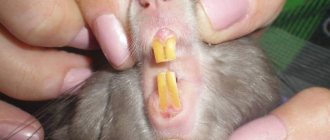Why does a guinea pig eat its own poop?
Owners of guinea pigs claim that these cute animals are distinguished by a number of behavior patterns that can at least confuse an inexperienced owner.
But even for such a seemingly absurd type of behavior, scientists have a logical explanation that will make you take a fresh look at the world of guinea pigs. Sometimes owners notice that their pet seems to curl up into a ball and begins to make chewing movements with its lips, as if chewing something. Beginners should know that scientists classify guinea pigs as a group of animals called caprophages. This subgroup is distinguished by the fact that it eats its own excrement.
Guinea pigs belong to the group of herbivores. As a result, they can get the most out of food, even if it is not the most nutritious. A guinea pig passes food through its own body twice: the first time after ingesting plant foods rich in fiber. It is partially digestible, while a whole group of microorganisms works in the pet’s intestines. It is these bacteria that help process incoming food into useful amino acids. And then, for the second time, she eats her own night excrement. As a rule, it is undigested and saturated with the required amount of protein compounds.
Despite the unpleasant fact for humans, caprophagy of animals is due to nature and saturates it with additional nutrients.
Varieties of guinea pig litter
Some owners immediately look for information about the possible harm of such a feature for their pet. Before searching, you should understand that pigs have 2 types of excrement:
- cylinders. This group contains unprocessed food residues; they must be eliminated during the cleaning process;
- in a more liquid substance - it contains vitamins of various groups, which the pig receives during additional digestion of the litter.
Another not very pleasant fact for owners: pigs eat the second type of litter directly from the anus. The fact is that the flora of the animal’s internal organs, in particular the intestines, is not adapted to produce the necessary microelements naturally.
Treating constipation in a hamster at home
What to do if it becomes clear that your hamster is constipated? First of all, it is necessary to provide it with water and a small amount of succulent food, vegetables and fruits. It is better not to give hamsters laxatives. Instead, the animal is given 1–2 ml of Vaseline oil from a syringe. You need to carry out two such procedures with a difference of 20 minutes, then wait 4 hours. If the intestines have not emptied, the hamster continues to be fed with oil.
To alleviate the condition, you can inject a little vegetable oil or a mixture of baxopan with paraffin oil into the anus. This must be done very carefully so as not to damage the thin mucous membrane. Therefore, it is better to have this procedure performed by a veterinarian. After this, it would be useful to massage your pet’s tummy clockwise, and then make him move, run, and play. This activates the digestive processes.
Pathology or normal phenomenon?
Most researchers are inclined to believe that this pattern of behavior is the natural norm for this group of animals. In the process of eating food, some vitamins are not absorbed by the animal’s body.
But as compensation, processes such as:
- food is processed in the stomach using gastric juice;
- bacteria help reproduce essential microelements;
- removal from the body of the substrate, which the pig eats, obtaining the missing substances naturally.
If the owner decides to artificially interrupt the process, then the pig will begin to experience negative changes in the body, in particular, disturbances in the functioning of the gastrointestinal tract and severe vitamin deficiency.
First, the pig eats grass and other foods rich in fiber. Then a number of microorganisms contained in the intestines come into play. It is thanks to their work that the very feces appear that are suitable for eating by animals.
Research has not fully established its true benefits, but what is certain is that this type of feces is very rich in proteins. Despite the not very pleasant fact, the process of eating food in animals leads to the replenishment of a whole complex of nutrients naturally.
In addition, the absorption of natural waste helps the guinea pig improve the functioning of the gastrointestinal tract, which by nature is poorly developed. Some people watch this process with disgust. But for animals it is quite natural.
With the help of the microflora of the cecum, a guinea pig can compensate for the lack of nutrients such as:
- vitamin B category;
- enzymes;
- vitamin K and a number of amino acids.
During the first meal, due to the individual characteristics of the body, the elements are not fully absorbed and the pig replenishes them using the previously mentioned method, which is not the most pleasant for humans.
The process includes 3 steps:
- First, the animal receives foods rich in fiber. The pet needs it, but it does not have time to be completely digested in one go;
- in the process of passing through the gastrointestinal tract, food is influenced by a number of bacteria, converting it into nutritional amino acids;
- After the products come out, the second stage of more thorough assimilation of useful elements begins.
It is with this lifestyle that the intestines and the general gastrointestinal system of the animal will function in the rhythm intended by nature.
This feature is characteristic of many representatives of the animal world. Many owners mistakenly believe that their pet eats droppings only out of stupidity or illness. In fact, animals are quite smart and know what is suitable for food and when. The owner’s task includes competent formation of the diet and timely provision of the animal with the necessary microelements. An important point is to adhere to a special diet; you should not overeat. With a varied and high-quality diet, the pet will receive all the necessary vitamins. It is in this case that the pet will remain active and healthy for quite a long time.
This phenomenon in animal behavior can often be found and not only in rodents. And even in ordinary dogs. Most often, in this way the animal seeks to compensate for the natural lack of any vitamins. For example, a number of monkeys in one of the African countries also ate their excrement. There is another variant of behavior among the young of this type of animal. It is clearly visible in the behavior of elephants, when cubs literally stick their trunks into their mother’s anus to extract nutrients. Despite this unpleasant feature, this behavior helps younger generations acquire high-quality microflora of the gastrointestinal tract, as well as create conditions for eating various types of plants.
As mentioned above, this type of animal includes rodents, such as rabbits or chinchillas. Their structure of the gastrointestinal tract system also does not immediately process food to the desired consistency. Due to the fact that a number of nutrients are not immediately absorbed by the intestinal microflora, the body needs more time to process them naturally. Rodents have a natural ability to compensate for the deficiency by repeatedly eating plant foods.
Treatment of constipation in a hamster in a veterinary clinic
If your hamster's stool does not return to normal within 24 hours after starting treatment, you need to go to the veterinarian. The doctor performs an ultrasound and prescribes treatment. To cleanse the animal's intestines, he gives an enema using painkillers. In case of intoxication and dehydration, the doctor injects the hamster subcutaneously with Ringer-Locke solution. To normalize the intestinal microflora, the veterinarian recommends a special probiotic. After a few days of examination, the hamster should recover. But if intestinal obstruction occurs, surgical intervention and rehabilitation are necessary.
After treatment, the animal is fed for some time with semi-liquid plant food: boiled buckwheat, carrots, prunes, oat leaves, parsley, dill. You can add some sunflower seeds. Dairy products, meat, eggs, flour products and dry food should not be given.
Truth and fiction about feeding pigs feces
There is an opinion on the Internet and among a number of veterinarians that if the pig’s natural functioning of the gastrointestinal tract system is disrupted, then it needs to be fed feces. It is worth knowing that this information is just a fictitious and outdated myth. An animal cannot be treated using this method; it must be shown to a veterinarian and treated with prescribed medications. If there are early problems with the digestive system, force feeding will worsen the situation.
In addition, you need to remember that pigs eat special night feces. It is impossible to obtain it artificially. And if you force feed it harmful species, you can also harm the body. Therefore, you should not believe common myths and it is better to resort to natural methods provided by nature.
What I am a master at is talking incessantly about hamsters. I have three hamsters at home, and my husband has a pet rat. That’s how we live, the six of us eat, the six of us sleep :)
Dog eats feces: why and what to do?
When a pet eats excrement, it is unpleasant for the owner. After all, he lives in a family, often licks all family members, sometimes even his face. Therefore, imagining that he had previously eaten poop creates an unpleasant feeling. This article will help you find out why dogs eat feces and how to wean them off it.
What is coprophagia?
The dangers of eating poop for your pet
Ways to correct unwanted behavior in dogs
Video "Why do dogs eat feces"
Comments and Reviews
What is coprophagia?
Coprophagia, the eating of excrement, is one of the main problems faced by dog owners. Eating the feces of other animals, especially herbivores, is a common phenomenon in the animal kingdom.
There are different types of coprophagia:
- autocoprophagy – eating one’s own feces;
- intraspecific coprophagy - eating the feces of relatives;
- interspecific coprophagy - a dog eating the feces of other animals, for example, cats, deer, rabbits, etc.
This behavior is not considered abnormal, just undesirable.
Many dog owners, seeing their pet grabbing excrement, begin to scream and run to him so that he stops eating, which is not worth doing. The pet, instead of stopping, on the contrary, tries to eat what it found as quickly as possible. Dogs perceive eating feces as a reward.
When the owner tries to punish the dog, it may not understand the reason for the punishment and may become afraid. Therefore, before dealing with this phenomenon, you need to find out why it does this, and then apply appropriate measures.
The dangers of eating poop for your pet
Coprophagia is not a disease, but only a bad habit that is unpleasant for owners of four-legged pets. The main danger of this behavior is the risk of becoming infected with internal parasites. Infection occurs when dogs eat the feces of infected dogs or wild animals. If your pet is regularly dewormed, he will not become infected with internal parasites from eating feces. But it’s better not to take risks and protect him from the possibility of eating the droppings.
Organisms such as Toxoplasma may be present in cat poop. In dogs, these organisms can cause a variety of problems, affecting the central nervous system and muscle tissue. If feces have been lying in the ground for a long time, fly larvae can be deposited in them, and infection with pathogenic bacteria and fungi is possible. It is better to avoid such sources of infection. If possible, feces should be removed from the yard as quickly as possible.
Diseases such as hepatitis and parvovirus infection can be transmitted through feces. Vaccinated animals have a much lower risk of disease.
Symptoms
Constipation in a hamster is a disorder of the intestines, which is characterized by difficulty in defecation or regular incomplete bowel movements. The owner of a hamster should be alert to the following alarming symptoms of the disease:
- reduction in the number of bowel movements;
- the droppings are very dry, dense and small;
- refusal of food and water;
- increase in abdominal volume;
- matted fur;
- restless behavior and sleep;
- wetness near the anus;
- the hamster often strains and squeaks;
- lethargy, apathy.
Causes
Feces eating is a more common behavior in bitches and puppies. In females, these are more sanitary and hygienic measures than a manner of behavior. Thus, she keeps the habitat clean. In addition, a natural instinct is triggered: by eating feces, the female destroys the smell, which can attract predators.
A puppy, observing a female eating his feces or a human cleaning up his poop, may similarly eat his own feces to earn rewards. Also, in a puppy, the consumption of feces may be associated with the formation of the intestines. This behavior goes away as the puppy grows up, unless it becomes a habit.
Feces contain many unprocessed nutrients, minerals and vitamins. A lack of them in the diet can cause pets to eat poop. In this case, their diet should be reconsidered. Malnutrition and diet food can make you want to fill your stomach with something to feel full. A possible reason for eating feces may be very fatty foods: the four-legged friend’s body may not be able to process such food.
Various diseases related to the gastrointestinal tract can make animals want to eat feces. For example, malabsorption syndrome, problems with the pancreas, infectious intestinal diseases. Intestinal bacteria, worms, and other internal parasites prevent the body from absorbing nutrients, which is why dogs eat their own poop and the feces of other animals.
By consuming feces, pets sometimes want to attract the attention of their owners in this way, without receiving it in everyday life. The dog may eat the excrement of the dominant animals in the house.
Sorry, there are no surveys available at this time.
Hamster has diarrhea
Diarrhea is an intestinal disorder that is accompanied by frequent bowel movements. The stool becomes liquid or acquires a mushy consistency. Diarrhea in a hamster in most cases has dire consequences.
The rodent's body quickly becomes dehydrated and the animal dies. Therefore, it is very important to detect diarrhea early and begin treatment.
The following signs indicate an intestinal disorder:
- change in stool consistency - it becomes liquid and does not hold its shape;
- feces acquire a pungent odor and change color;
- the rodent's fur loses its former luster and becomes sloppy;
- the hamster lies in the corner;
- the animal does not approach the feeder, does not even show interest in its favorite treats;
- the pet does not want to play with the owner;
- The fur in the anus area is dirty and matted.
Attention! If diarrhea in a hamster is caused by an infection, then other symptoms of the disease may be observed - purulent discharge from the eyes, trembling in the body.
Possible reasons
Diarrhea in a hamster can be one of the symptoms of an infectious disease:
- salmonellosis;
- Tizzer's disease;
- colibacillosis;
- paralysis
In each of these cases, the prognosis for treatment is unfavorable. But diarrhea is not necessarily caused by infections; there are other causes of diarrhea:
- sudden change in diet;
- overeating - the stomach simply cannot cope with the amount of food that the hamster eats;
- the rodent ate spoiled food - moldy grain or rotten vegetables;
- the pet has eaten a poisonous plant or toxic substance;
- a foreign body has entered the stomach.
What to do if your hamster has diarrhea
If your pet has diarrhea and lives with other hamsters, it should be separated from its neighbors. It is important to carefully monitor the well-being of rodents, because they could become infected from a patient. The cage and all equipment should be treated with a disinfectant solution, the remaining food should be thrown away, and the filler should be replaced.
It is advisable to take the hamster to the clinic on the same day to clarify the diagnosis. The doctor will examine the rodent and make recommendations regarding treatment for diarrhea. If it is caused by one of the infectious diseases, the pet will be prescribed antibiotics. As a rule, this is Tetracycline or Chloramphenicol.
If diarrhea is caused by other reasons, the hamster is put on a diet. Juicy foods such as vegetables, fruits and herbs are excluded from the diet for some time. Boiled rice without salt or oatmeal are included in the daily menu.
With diarrhea, the body quickly loses fluid, so its reserves need to be replenished. If the rodent does not drink from the drinking bowl, you will have to drink it from a syringe without a needle.
Attention! After each contact with a sick pet, you must wash your hands with soap.
To watch online, click on the video ⤵
FIGHT FOR POO / HAMSTER kids Elli - Day 5 / funny hamster kids / HAMSTERS HAVE GROWN UP / ALICE EASY Read more
HAMster - THE WHOLE TRUTH! POOPING ON MY HANDS ALL THE DISADVANTAGES OF HAMSTERS | Elli Di Pets More details
Why do some animals eat poop? More details
Why do animals eat their offspring? More details
WHY DID THE HAMSTER EAT THE HAMSTERS? / The hamster ate the children. / Why does a hamster eat children / SHOCK! More details
The man decided to check the hamster's teeth, but when he opened his mouth, he was very surprised Read more
Why does a parrot eat its own poop?))) Read more
Guinea pigs eat their own poop. Why? More details
What should a hamster not eat? Dangerous products. More details
Guinea Pigs EAT THEIR LOODS. Unusual ANIMALS / SvinkiShow More details
She gave birth and ate children. NOT TO LOOK NERVOUS! More details
Why do hamsters eat their babies? Read more
Why do animals eat their feces? [MinuteEarth] Read more
How do animals fart? Part 2 | I'm dying of laughter Read more
Why does a dog or puppy eat its own feces and the feces of other dogs, how dangerous is it and how to deal with it Read more
Kamil and Aminka LOST A PET! WHO IS BLAME FOR EVERYTHING? For children kids children Read more
Why do animals eat their children? More details
THE ANTS EATED THE HAMster WHO KILLED HIS MOTHER! Khomka bonus at the end of the video. More details
Coprophagia, what kind of disease is it and how is it dangerous?
Sometimes dog owners face a big problem when their pet starts eating feces. This disease is called coprophagia. In the animal kingdom, feces eating is a common phenomenon. Looking at the statistics , 80% of dogs occasionally eat poop and only 16% do it all the time. This behavior is most observed in neutered males and females. Such behavior in animals is not considered a deviation - it is harmful and undesirable. There are several forms of coprophagia:
- Eating the feces of other dogs is intraspecific coprophagia.
- Eating your own feces is autocoprophagy.
- When a pet eats human, cat, rabbit feces, chicken droppings, etc., this is interspecific coprophagy.
Toy poodles are the only dog breed in the world that almost never does this.
Many dogs consider eating feces a reward. Therefore, if you notice that the dog has grabbed feces and started eating, you cannot run screaming to it and yell at the whole neighborhood so that it doesn’t do this. Instead of giving up everything, your dog will try to eat everything faster. There are many different parasites and infections in animal feces. What danger threatens your pet?
- Viral infection parvovirus. Most often, young individuals become infected with this disease. Parvovirus is an extremely serious and dangerous fatal disease.
- Helminths (intestinal parasites). Often the internal organs become clogged with large balls of intestinal parasites, causing them to rupture. For a pet, this is fraught with death. To prevent your dog from becoming infected with worms, preventive maintenance should be carried out regularly.
- Toxoplasmosis. The disease can be contracted from cat feces. Parasites affect the muscles and central nervous system of the animal. In some cases, it is impossible to cure toxoplasmosis. The pet's immunity becomes so weakened that it dies. This disease is especially difficult for individuals over seven years of age. You should know that toxoplasmosis is transmitted from dogs to humans.
- Jaundice. The disease affects the liver, and the animal can die 12 hours after infection. Elderly and young individuals have a hard time suffering from this disease. To reduce the risk of infection, the animal should be vaccinated.
The puppy eats his own excrement, what is he missing?
Trying to figure out and establish the reason why dogs eat feces, dog experts came to the conclusion that several factors influence this.
- Health problems. Our pets do not know how to talk and, in the hope of helping themselves, they begin to behave incorrectly. If your dog starts eating cat or other animal feces, the problem may be in the gastrointestinal tract. It may also be a feeling of heaviness in the stomach, flatulence, various feelings of discomfort, difficulty with bowel movements. To understand the cause, you should visit a veterinary clinic. A comprehensive examination is carried out: biochemistry tests are taken and an ultrasound is performed - which will show whether the animal has physical abnormalities.
- Poor nutrition. To activate digestion, like their wild relatives, dogs follow their instinct and begin to eat feces. Due to the large amount of meat consumed by wild predators (wolves, etc.), the stomach does not completely break down and absorb food ingredients. So they start eating dung. Due to the fact that it contains various bacteria and enzymes, the stomach processes heavy food better. The city dog replaces manure with human or cat feces and bird droppings. The reason may be hidden in overfeeding and feeding only cereals. Cheap food, too fatty or salty food, an unbalanced diet, all this can be a serious reason why dogs eat excrement.
- Lack of attention. More than punishment, dogs fear the feeling of being unwanted. And in order to attract the attention of the owner, they behave inappropriately. When a dog, left alone in a closed house, begins to peel off wallpaper, damage furniture, bark and howl, it is then that, out of loneliness, it eats its own feces. If this becomes a habit, she will continue to do the same thing on the street.
- Fear and insecurity. Some dogs behave aggressively and nervously towards other dogs or ordinary passers-by. This happens due to fear of attack. To destroy the smell, so that stronger predators do not find it and the owner, they begin to eat their own feces. Another option is that living in the same territory with a cat and eating its excrement is nothing more than a fight for territory. If the cat leaves his marks, it means that he wants to occupy the apartment.
- Imitating mom. After the puppies are born, the bitch eats their feces for about a month. And it stops doing this after its composition changes. Puppies, seeing this behavior, can repeat everything after their mother. Gradually it becomes a habit and as adults they will continue to do it.
- Curiosity in puppies . Little puppies get to know the world around them by eating everything that comes their way. Including animal excrement. Sometimes eating excrement is associated with the formation of the intestines. This need appears in puppies up to three months of age.
How did your hamster die?
Well, this is a tragic story about an entire family of hamsters.
Once, having bought myself a hamster, not suspecting that he might turn out to be a lady, I lived calmly for three days, not knowing either grief or complete bewilderment. But all good things, as we know, come to an end sooner or later. And when I returned home after a wonderful day, I saw that I now had not 1, but 5 hamsters.
As they grew older, I began to think that they needed to go somewhere. My dog helped me a little with this. Since the hamsters were still too small, they could crawl between the bars of the cage. My dog found one such lucky person at such an opportune moment. The bloody corpse of the hamster was left lying on the carpet with a leaking eye. There are 4 of them left.
I gave a couple of hamsters to my friend and sister. Now only two hamsters inhabited the cage. Mother and son.
Feeding them was somewhat problematic for the reason that they bit horribly, and in order to give them food you had to put on mittens, put the hamsters in their walking ball, and only then clean the cage and pour food into them. So the hamsters ate extremely rarely, and in general they didn’t particularly remind us of themselves.
Quiet spring morning. Thanks to my good mood, I finally decided to feed the hamsters. I approach the cage and don’t see a single one. At first I thought that they might be hiding in the house, but after several blows to the cage, no one came out. My sleepy eyes were just beginning to see more clearly, but it would be better if they didn’t, because what I saw next shocked me. At the bottom of the cage, half buried in the filler, lay the hamster’s paws and a small tuft of his fur. Looking a little to the right, I saw the corpse of my hamster son. It turned out that being too hungry, he devoured his mother, but having received wounds incompatible with life, he himself died. There were no more inhabitants in the cage. A small draft carried the remains of hamster fur around the room.
don't have any more animals please
He died on May 9, in his house, when I came home after the parade. As they say, he fell for the veterans. I still give him my respect; I had the most well-mannered hamster. By the way, his name was George.
Did they put a St. George's ribbon on the coffin instead of a flag?
Khomyak Pavel.
The story is about my first and last hamster, although there were quite a few of them. This wonderful beast's name was Pavel, my mother gave it to me for my birthday. He was big and lazy, so you could take him with you everywhere and he rarely ran away. A month later, I realized that he might be lonely, so I need to get him another girlfriend. So I spent all the money they gave me for school lunches on Masha. They became friends and fell in love, but then problems arose with their living conditions. One day my grandfather was returning home after work and saw a brand new hamster cage that was displayed in the entrance, he brought it home and decided to wash it and give it to Masha and Pasha. The cage was two-story with a running wheel and a house, but what was my surprise when another hamster crawled out of the house. I named her Svetlana. I don’t know why I called hamsters so strangely. The three of them began to live together.
One warm May day, returning home from school, I saw that I no longer had 3 hamsters, but a dead one. And then I didn’t know that the females needed to be seated and that hamsters could eat their babies. As they say, everything comes with experience. It gets worse. Masha had to be put in the old cage with the children, Pasha, not long missing Masha, began to cheat on her with Svetlana, which led to the appearance of new offspring, which my mother was doing somewhere. I think she drowned them.



